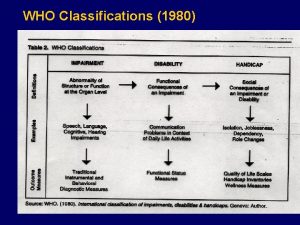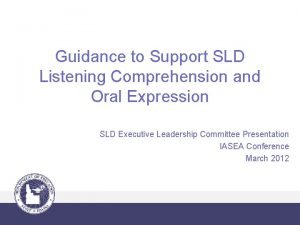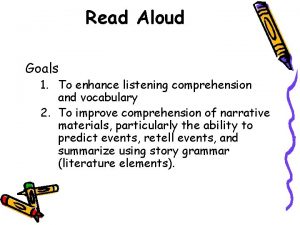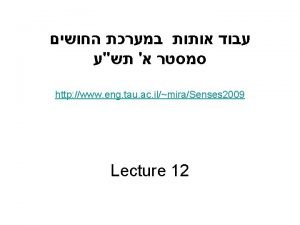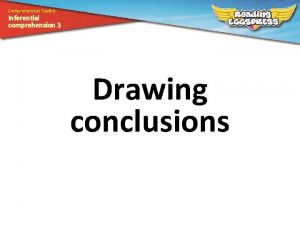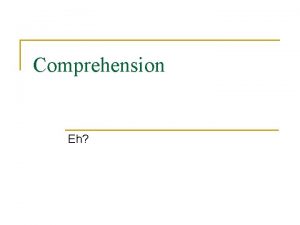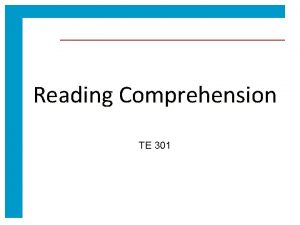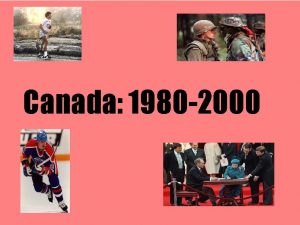WHO Classifications 1980 Auditory Comprehension Goals Pierce 2000









- Slides: 9

WHO Classifications (1980)

Auditory Comprehension Goals • (Pierce, 2000) Goals • • • Teach caregivers techniques of communicating with patient to facilitate communication Improve patient’s auditory skills Teach patient strategies that will compensate for difficulties • • • Gestures - shrugging shoulders Facial Expressions - frowning Verbal Expressions - request for repeat or to speak slowly

Auditory Comprehension Target Skills (Pierce, 2000) • Target Skill Areas • • Pointing to pictures Yes-No questions Following directions Listening to stories and answering question

Auditory Comprehension Strategies (Pierce 2000) • Strategies • • Speak slowly Alert the patient to the task Stress keywords Add supplementary information • • • Gesturing Writing down keywords Repeat the message (rephrase) Allow patient time to process and respond Manipulate the number and complexity of stimuli presented Proceed from concrete (objects) to abstract (pictures)

Expressive Language - Severe Level (Pierce 2000) • Goals • • • Establish effective communication system by pointing to pictures or written words in communication book Establish reliable “yes-no” response system by head shakes, verbalization, or facial expression Provide patient and caregiver training and counseling regarding patient’s communication deficits

Expressive Language - Moderate-Mild Level (Pierce 2000) • Goals • • • Improve word-retrieval skills Teach patient strategies to enable him to become a more effective communicator Provide patient and caregiver training and counseling regarding patient’s communication deficits

Expressive Language - Moderate-Mild Level (Pierce 2000) • Strategies • Clinician presents stimuli in such a way that patient can respond appropriately Clinician chooses stimuli and manipulates • • • Semantic Categories Form (objects, pictures, text) Mode of stimulus presentation (auditory, visual, or multi) Cues • • • Imitation Phonemic cues Sentence completion Written cues Semantic cues Gesturing

Goals & Options for Therapy • Goals • • • To assist people to regain as much communication as their brain damage allows (maximize use of residual linguistic capacities). To help them learn how to compensate (develop augmentative or alternative modes of communication) for residual deficits Options available to the clinicians to achieve these goals are • • • simplify the tasks and instructions control or manipulate the stimuli provide a wide variety of prompts and cues manipulate the mode of input (Stimulus Modes) manipulate the level of response (Response Modes)

• References z Pierce , Roberta B. Speech-language pathologist's guide to home health care. San Diego: Academic Press, 2000.
